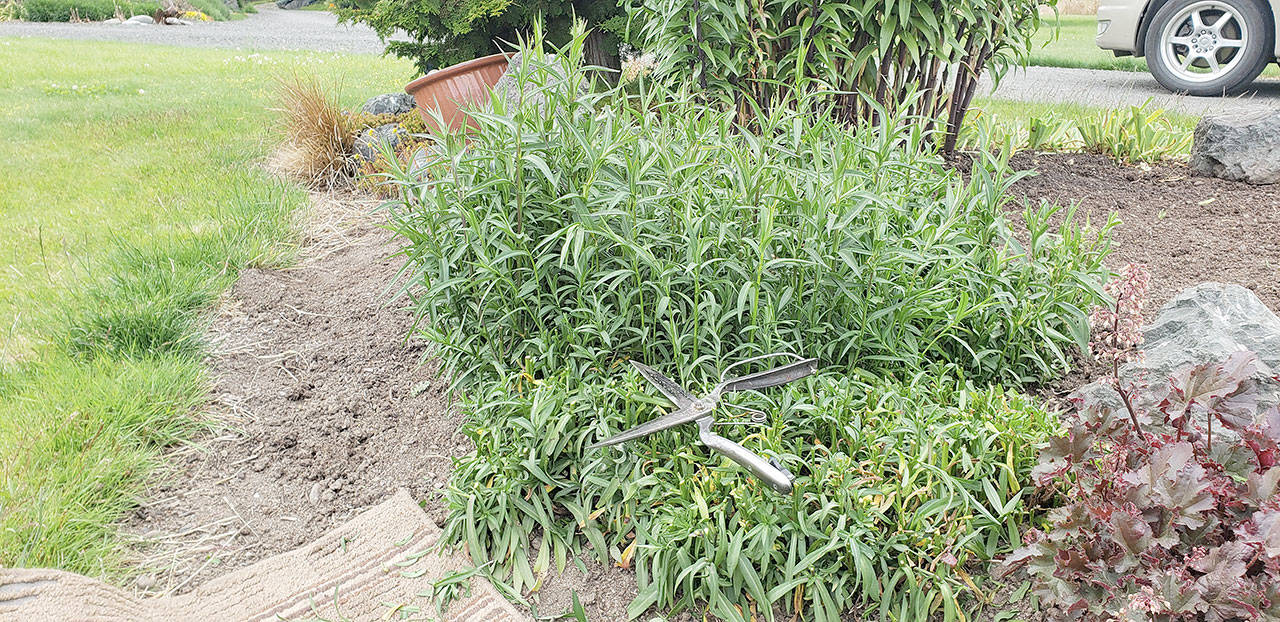THE GREAT THING about gardening in your yard is the fact that you do not need to wear a mask, so a very tranquil situation can still be “normal.”
However, with the Advent of July just a mere three days away, things should theoretically dry up and dust might become an issue.
But regardless, we know the garden chores never dry up, so here is your July to-do-list.
Corona garden
Here we go, sun is up, as is the soil temperature, so everything is growing.
I just had mice devastate my new radish starts, so please stay on top of bugs, slugs, weeds and disease.
Insecticidal soap works great against insects, as does pruning or removing the infected plant.
Chunky peanut butter on an old fashioned “snap” trap was the end of the mice menace.
And sound culture practices like watering early in the morning along with pulling old, big yellow and dying leaves keeps mold, mildew and many bugs at bay.
Changing moisture
Your plants are larger, the sun is higher and at a different angle.
Your soils are now shaded and the edges of beds are drying out so remember to monitor, change and adjust your watering cycles and durations. And remember, soon we will start to go dry.
Water deeply every week and all super sunny warm days because this releases the fertilizer, which keeps from stressing out your beautiful blooms. Prolific flowers will be the result.
De-pollinate your lilies
As soon as the buds on your lilies crack open and you can get your fingers in there, do so. Pinch, hold and pull off, removing the anther.
All plants exist to procreate and by removing the mechanism of pollination, the blooms will hang on as long as possible, too dumb to know they have been de-sexed.
Also, as an added bonus the pollen won’t stain and discolored the flower. Longer-lasting, more gorgeous flowers are the result of this horticultural trick.
Double pinch
Those of you who heeded my advice weeks or months ago to cut back (pinch) your asters, fall garden mums and fall flowering sedum now can join the elite class of upper echelon horticulturist by double pinching them.
This is what the finest nursery and greenhouses do because it will develop a humongous head of compact flowers.
If you have not yet done this and these plants are now 14- to 18-inches tall (or more) with bud showing, do so, for it will quadruple the flowers this fall.
But you must do so no later than Friday, because these tree plants are photo-periodic — they need long days and short nights to set flowers.
Catching them later than this week will cause flower buds to be late and die in the cold December temperatures and snows.
Dis-bud
How does one get long-stemmed, large flower roses, dahlia flowers, great Carnation or magnificent Zinnia cut flowers? Disbud.
All plants that you want to have a huge end of the stock (terminal bud) flower, only get this by dis-budding every side bud you can see and doing so ASAP.
On plume-type flowers such as liatris, delphinium, foxglove, lupine, floribunda roses, coxcomb and gladiolas, you dis-bud by removing the very tip. All of this dis-budding makes for larger flowers on thicker stems, so give it a try.
Check for sales
Now that it is July the plant vendors are selling many flowers, perennial, baskets and specimen plants. Go on an old-fashioned treasure hunt and purchase some new, cool, not had before plants for your yard.
Re-sow
For veggie garden folks with radishes, greens, lettuce, beets, carrots, peas, all brassica (cabbage, broccoli, Brussels sprouts, kale, etc.), sow some more seed for a great cornucopia of fall harvest.
Cultivate
This was the ancient trick of Greek and Roman agrarians. To cultivate, which is to lightly scratch up the soil actually breaks up the crust, which quickly forms on all soils.
Cultivating your soil means making sure it is aerated and that water flows freely downward, not laterally on the crust. As an added bonus, this method weeds as well, so do this double duty task a few times a month for optimum results.
Cut/pull bulb foliage
Now is the time, if you have not done so already, to remove the last of all tulip, daffodil, hyacinth, crocus and other bulb foliage. Then cultivate the soil, lime meal the area, and wait for next year’s extravaganza.
Leaf and vegetative strip
Your perennials, flowers, trees, bushes, shrubs and vines are all growing rather aggressively. As you water every day or two or at least twice a week for the summer, cutaway a bucket or two of big old leaves, over-reaching branches, errant stems and crowding plant pieces for a secret trick that the best of gardener’s employ.
Well, that should keep everyone busy for a while between their summer runs to the beach, forest or mountains.
And remember, help keep everyone safe and please: Stay well all!
________
Andrew May is a freelance writer and ornamental horticulturist who dreams of having Clallam and Jefferson counties nationally recognized as “Flower Peninsula USA.” Send him questions c/o Peninsula Daily News, P.O. Box 1330, Port Angeles, WA 98362, or email news@peninsuladailynews.com (subject line: Andrew May).

